Table of Contents
Training your dog is not an easy task as it requires patience and consistency, whether it’s dog board and training, guard dog training, or emotional support training. When you own a puppy, you must know how to be patient with them. Such is the case with the hunting dog, also known as a gun dog. If you are a hunter and want to experience hunting adventures with your dog, then don’t worry, as this article guide will provide you with the best hunting dog training tips and steps to follow. Not only will you be able to best train your puppy, but also teach them the find and retrieve game efficiently.

Hunting Dog: Your Wildlife Companion
For every wildlife fanatic, going hunting with a trusted buddy is a thrilling trip. Hello to the world of hunting dogs: wonderful four-legged creatures that have been bred and taught to help hunt game. These trained dogs are companions in the field rather than just household pets. The cornerstone of their learning is obedience training, which instills discipline and the ability to follow instructions. Training sessions are frequent and satisfying, with an intense focus on consistency and patience. Crate training facilitates transit and offers safety. Moreover, you can create a connection with your dog that goes beyond simple companionship by investing time and energy in its training. Hunting dogs are creatures that hunt for their owners or accompany them in their hunting adventures.
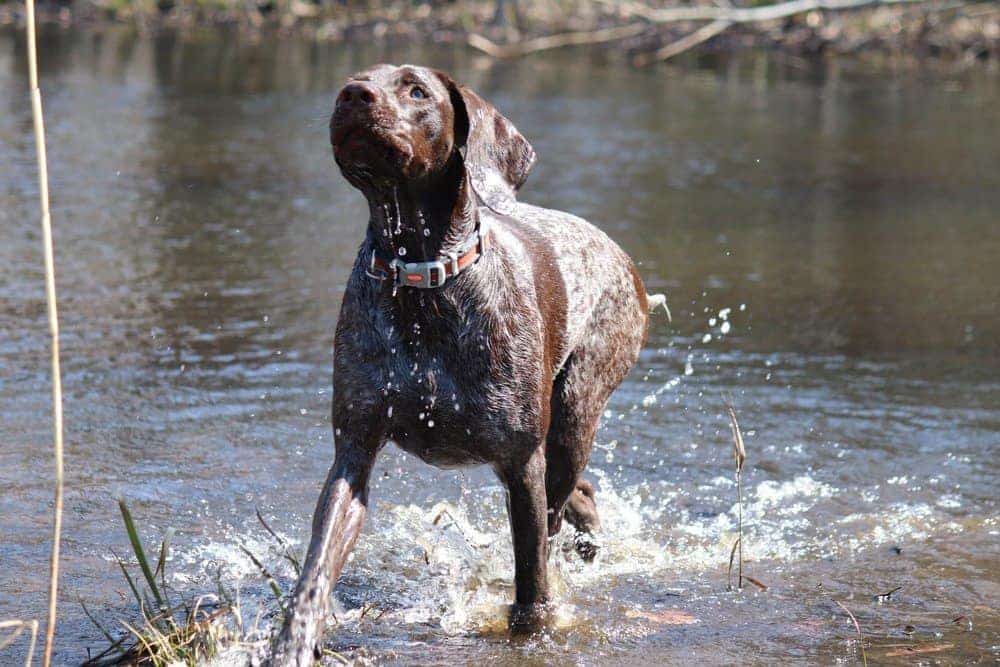
Hunting Types in Hunting Dog Training
If you are a hunting lover, you might know that these types of gods are good at various hunting activities. Hunting dogs are excellent at many different types of hunting, and to get the most out of them, they need specific training. The following procedures can be used to train hunting dogs for various kinds of hunting:

1. Duck Dog (Waterfowl Hunting)
- Obedience Training: Begin with basic instructions such as sit, stay, and retrieve.
- Introduction to Water: familiarize the dog with water while gradually deepening the dive.
- Retrieve Training: To replicate bird retrieval in water, use decoys.
- Blind Retrieves: Instruct the dog on how to bring ducks from hidden areas.
- Practice Hunting for Waterfowl: Take the dog to actual hunting areas, such as ponds or marshes.
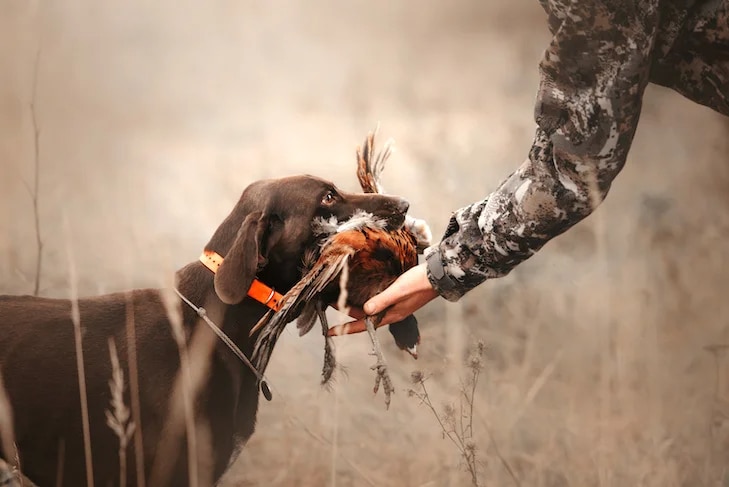
2. Bird Training for Dogs (Pointing Dogs)
- Introduction to Birds: Teach the dog the scents of birds and birds with clipped wings.
- Pointing Behavior: Use positive reinforcement to strengthen innate pointing behaviors.
- Field Training: Work on retrieving and pointing birds in open areas.
- Steady to Shot: Teach the dog to stay steady when flushed with birds.
- Advanced Field Work: Develop your retrieving and pointing abilities in a variety of hunting settings.
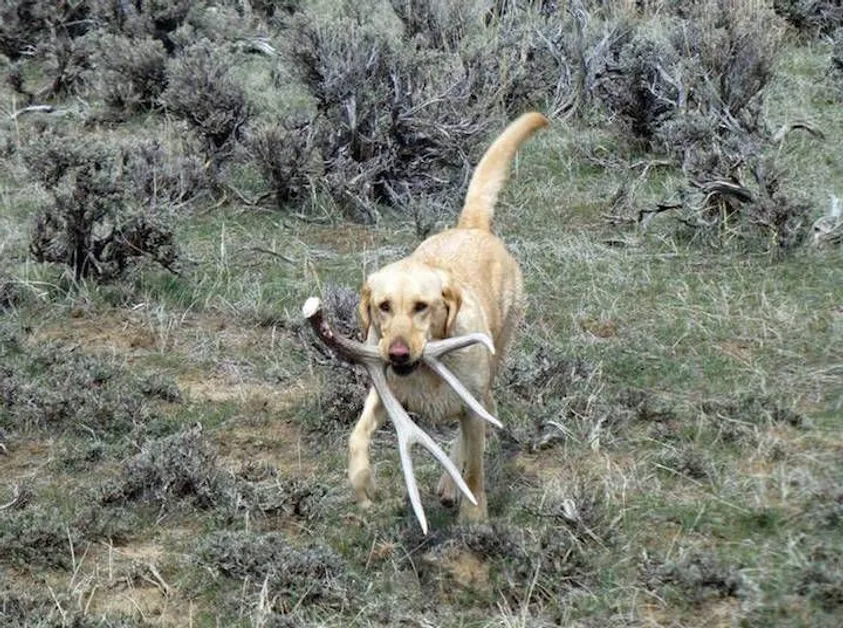
3. Shed Hunting Dogs (Shed Antler)
If you are wondering how to train a dog to shed hunt, follow the steps below:
- Scent Introduction: Introduce the dog with the scent of freshly shed antlers.
- Search Training: Train the dog to look for antlers in wooded areas methodically.
- Retrieve Training: Teach the dog to find and retrieve antlers.
- Scent Trails: For practice, make scent trails that lead to secret antlers.
- Field Practice: Use the dog’s training in real-life scenarios by taking it on shed hunting trips.
Customizing training to the unique skills and techniques needed for each type of hunting is important for success in hunting. With these rules in place and constant reinforcement of desired behaviors, hunting dogs can develop into valuable companions for a range of hunting activities.
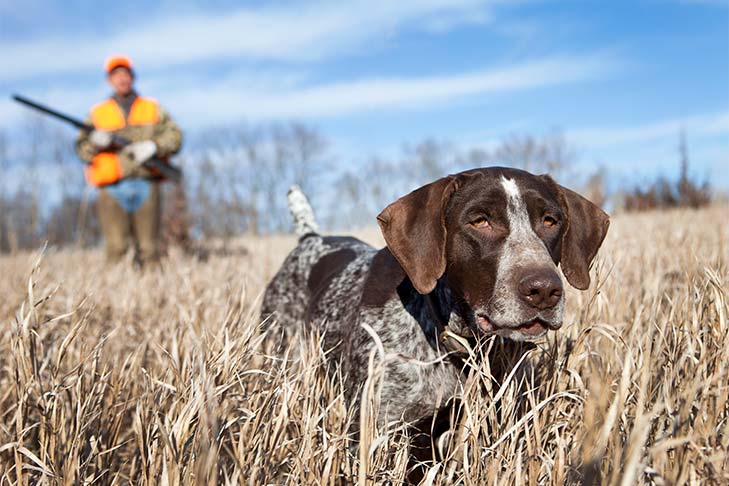
Grasping the Concept of Find and Retrieve Game in Hunting Dog Training
“Find and retrieve game” is a fundamental skill in hunting dog training that is important to success in a variety of hunting activities. This involves teaching the dog to find prey and return it to the hunter. Dogs can make use of their excellent senses to detect scent trails, flush out game birds, and find fallen prey through methodical training sessions. For example, a dog trained for duck hunting needs to be skilled in removing ducks from the water. To prepare hunting dogs for this task, specific retrieval exercises, water exposure, and obedience training are required. Training hunting dog breeds to find and retrieve games is important for both maximizing hunting efficiency and ensuring the pleasure and safety of the hunt. It improves the relationship between hunter and canine companion in addition to being a useful skill.
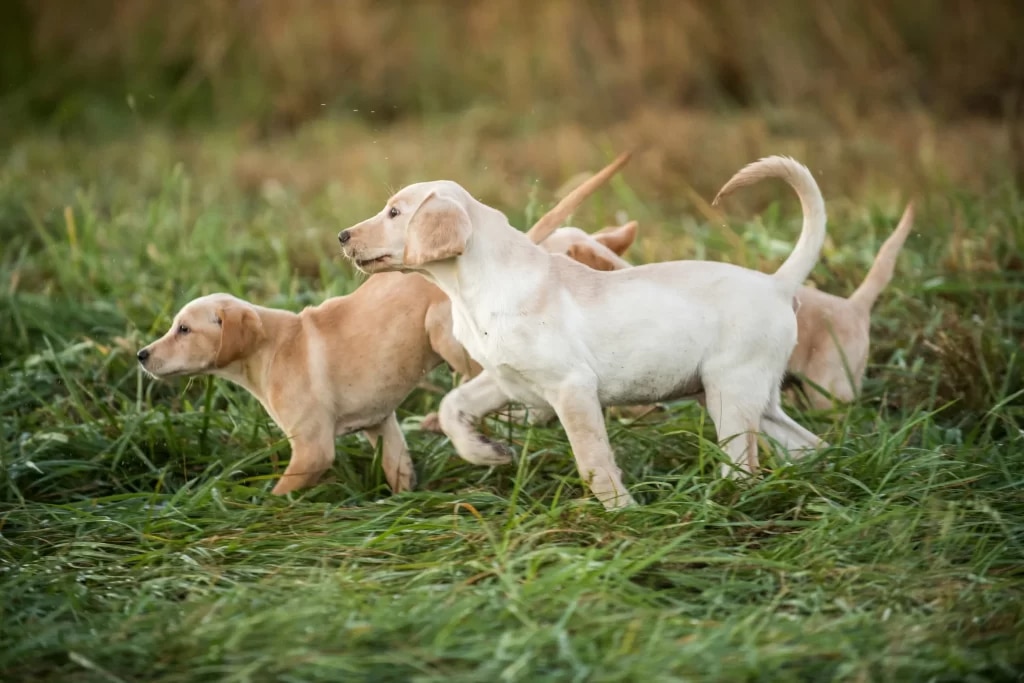
Steps in Hunting Dog Training
The training for preparing a hunting dog involves many steps ranging from choosing the right breed to consistency in the training process. The dog training for hunting can be done professionally as well as at home if you know the basics. We’ll discuss each one of the steps one by one:
1. Obedience Training in Hunting Dog Training
All other training depends upon this first stage. Developing clear communication with your dog through the teaching of fundamental commands like sit, stay, and come will ensure that your dog understands and obeys your instructions.
2. A Brief Overview of Scent: Important Step in the Hunting Dog Training
Dogs’ keen sense of smell makes them indispensable for hunting. Their ability to track and identify prey based on smell trails is improved when they are exposed to the scent of the game they will be hunting.
3. Retrieve Training (for Retrievers)
For hunting dogs, particularly retrievers, retrieving is an important skill. Their retrieving instinct is developed and they get ready to retrieve game during hunts by being taught to recover things such as bumpers or prey dummies.
4. Teaching Pointers or Flushers in Hunting Dog Training
Hunting dogs can be trained to flush the game out of hiding (flushers) or point at it (pointers), depending on the breed. The dog is trained to either freeze in a pointing attitude or flush out game birds by using scent or dummy birds during training.
5. Field Exposure in Hunting Dog Training
The next step is important if you are thinking about how to train a hunting dog perfectly. By putting the dog in a setting that matches actual hunting situations, you can help them hone their skills in a natural setting. By gradually introducing the dog to increasingly difficult hunting circumstances, you can help them gain confidence by starting them in controlled situations.
6. Water Work (for Waterfowl Retrievers)
It’s crucial to introduce water to your waterfowl retriever and teach them how to recover game from the water when training them. Getting the dog used to the water and training retrieving ducks or other birds in various water conditions are part of bird hunting dog training. However, it is important to mention that labrador retrievers are best known for waterfowl hunting. But you can always choose your puppy.
7. Advanced Training in Hunting Dog Training
After the fundamentals are understood, more difficult hunting techniques are taught, including quartering (finding the game in a methodical pattern), steadiness to shoot (staying motionless while birds are flushed), and blind retrieves (retrieving unseen things).
8. Consistency and Practice as an Important Step in Hunting Dog Training
Consistent training sessions help the dog maintain his or her skills and encourage new habits. To make sure the dog remembers what they’ve learned and keeps improving in their training, consistency is essential.
9. Hunting Practice
Whether it’s shed-hunting dog training, duck-hunting dog training, or any other bird-hunting dog training, practice is important. Dog hunting offers a practical experience that is invaluable. By using their training in real-world hunting scenarios, dogs can further hone their abilities and instincts through hunting practice.
10. Continued Reinforcement
The process of training never ends. The relationship between the dog and handler is strengthened, and the dog’s skills are maintained even after the initial training is over, with ongoing reinforcement throughout the dog’s life.
You can successfully train a hunting dog that is skilled, obedient, and prepared for the field by using these stages and adapting them to fit your dog’s breed, temperament, and hunting objectives.
However, if you want to know safety tips regarding hunting dogs, check out Susan Paretts’ blog.
For Your Information
“Crate training is also beneficial training that is given to puppies so they can view their crate as the safe space for rest.”

Popular Hunting Dog Breeds
When it comes to hunting dog training, it is important to choose the right breed for this purpose. You can’t just go around and pick any random breed. Let’s see what dog breeds are used the most for hunting.
1. Labrador Retriever
Well-known for their adaptability and friendly nature, Labrador Retrievers are excellent hunters of waterfowl. They are the perfect partners for retrieving ducks and other waterfowl because they have a strong retrieving instinct, outstanding swimming skills, and a keen sense of smell.
2. German Shorthaired Pointer
German Shorthaired Pointers are known for their speed and adaptability, and they excel in upland bird hunting. They are exceptionally strong, have excellent hunting instincts, and are born pointers and retrievers of game birds in both the sea and on land.
3. Beagle
Beagles are small to medium-sized dogs that are highly valued for their extraordinary sense of smell. They are excellent at hunting rabbits and other small wildlife. They are excellent hunters in difficult terrain and dense cover due to their strong sense of smell, diligence, and resolve.
4. Golden Retriever
Well-known for their friendly and devoted nature, Golden Retrievers make excellent hunting partners. They are excellent retrievers and do particularly well when hunting upland birds and waterfowl. Moreover, they are well-liked as household pets and for hunting due to their intelligence, willingness to please, and flexibility.
5. English Springer Spaniel
In the field, English Springer Spaniels are well-known for their passion and activity. However, they are excellent at flushing game birds like grouses and pheasants, making them useful hunting dogs.
6. Vizsla
Vizslas are renowned for their excellence, athleticism, and loving nature. They are excellent all-around hunting dogs that are skilled at locating and bringing down game birds. They are great companions for upland bird hunting and other hunting activities because of their extraordinary stamina, keen sense of smell, and innate hunting instincts.
These hunting dog breeds are popular among hunters all over the world because they each have special qualities and skills that make them ideal for various hunting situations and game species.
Conclusion
Summing up, this article covered a detailed discussion on hunting dog training to bring the best out of your hunting companion. Moreover, different dog breeds that are popular for hunting activities have also been discussed. So, if you are a hunting lover, pick out the best breed and train them now.
Born to Hunt, Bred to Retrieve!

